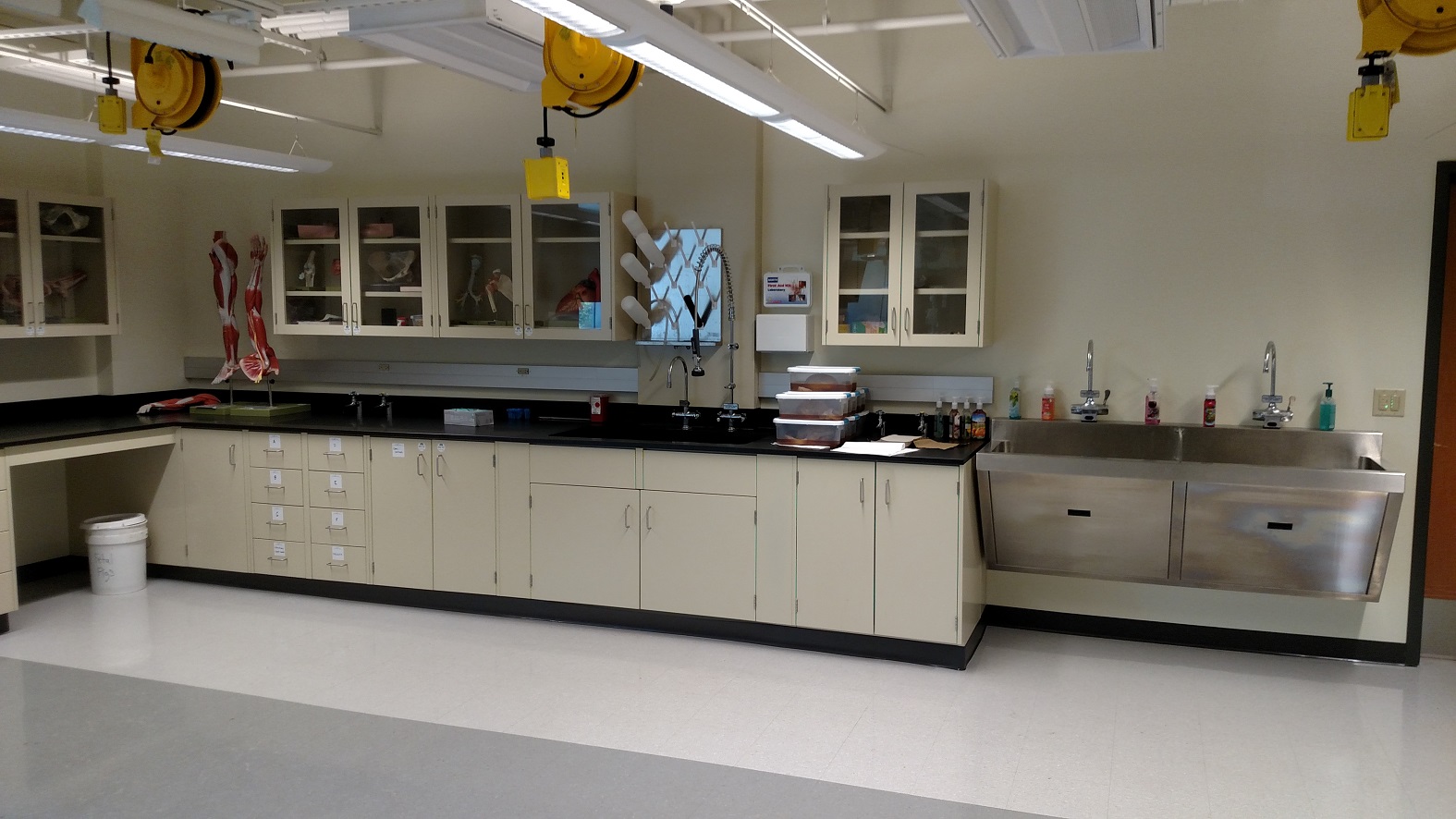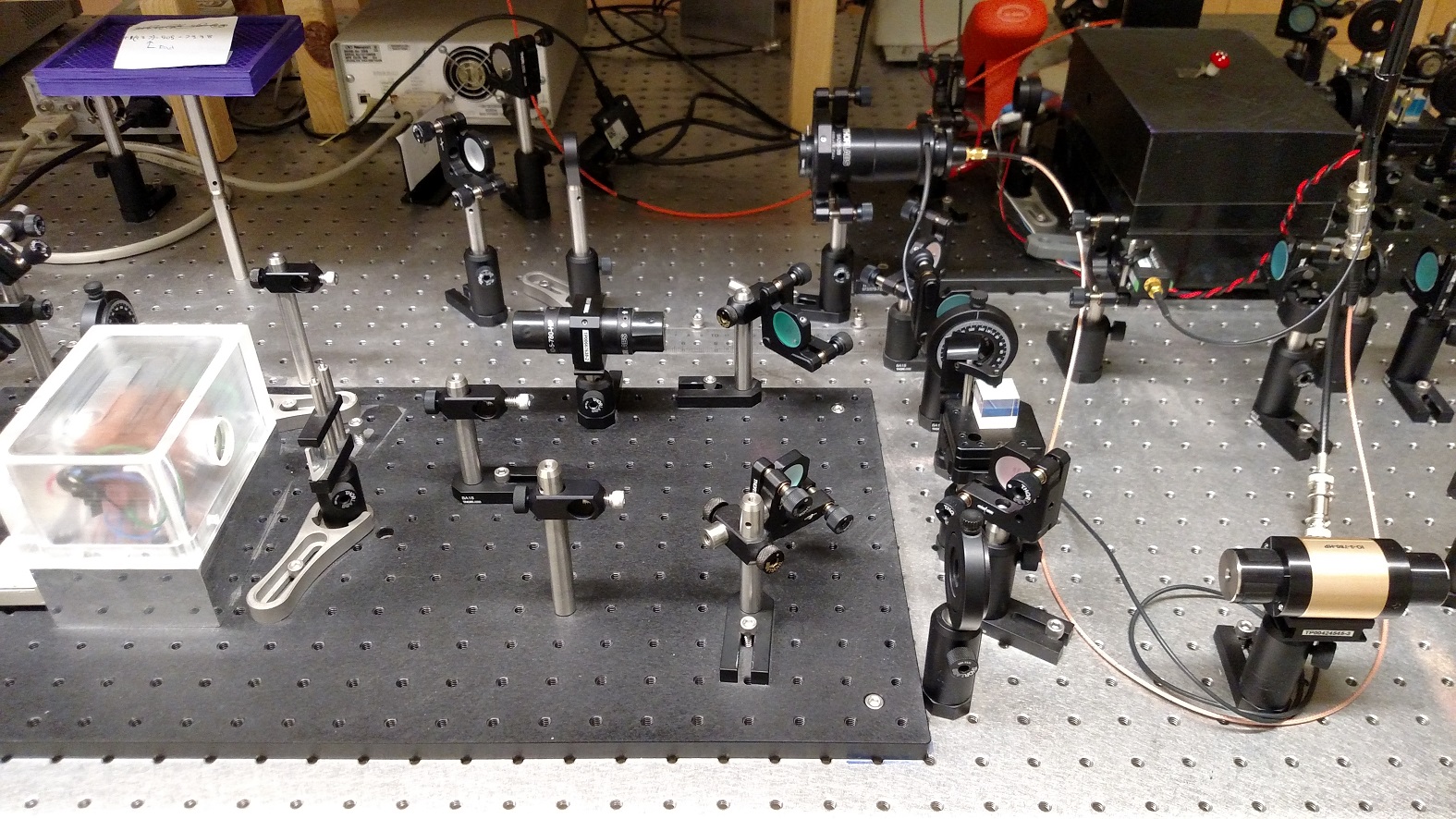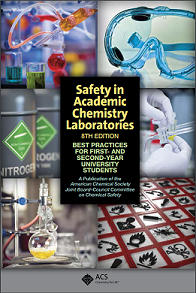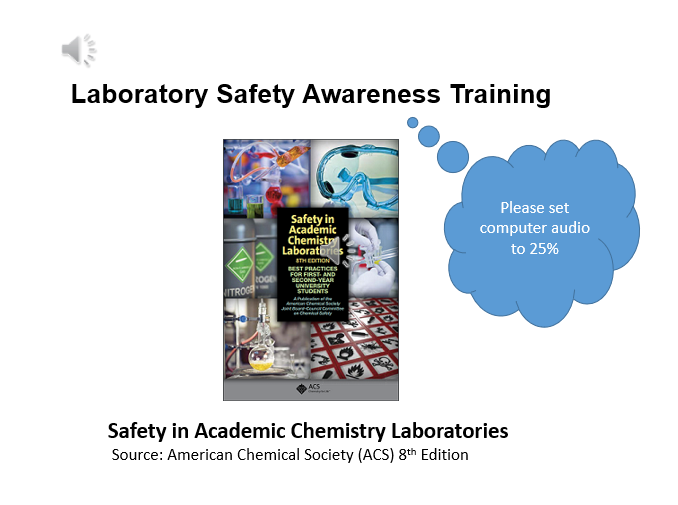
Safety Training Resources
St. Norbert follows the best practices provided in the American Chemical Society (ACS) publication, Safety in Academic Chemistry Laboratories 8th edition.
Click on picture to read the 76 page booklet, or click on the chapter links below.
Table of Contents
Chapter 1 - Being Safe in the Laboratory .............................10-13
Chapter 2 - Your Responsibility for Safety in Laboratories .......14-25
Chapter 3 - Guide to Chemical Hazards.................................26-45
Chapter 4 - Recommended Laboratory Techniques..................46-59
Chapter 5 - Safety Equipment and Emergency Response.........60-71
Safety Awareness Training PowerPoint
Health-hazardous chemicals include those which are carcinogens, toxic or highly toxic agents, reproductive toxins, irritants, corrosives, sensitizers, hepatotoxins, nephrotoxins, neurotoxins, hematopoietic system agents and agents which damage the lungs, skin, eyes or mucous membranes.
Physically-hazardous chemicals refer to those in which there is scientifically valid evidence that it is a combustible liquid, a compressed gas, explosive, flammable, an organic peroxide, an oxidizer pyrophoric or unstable or water-reactive.
Exposures for all substances should be minimized; during work with substances which present special hazards, special precautions should be taken. Any toxic mixture should be considered more toxic than its most toxic component. Substances of unknown toxicity should be considered toxic.
Always check the Safety Data Sheet (SDS) information before working with a chemical.
Contact Info
Mark Musser, Chemical Hygiene Officer (CHO)920-403-4019
mark.musser@snc.edu
















